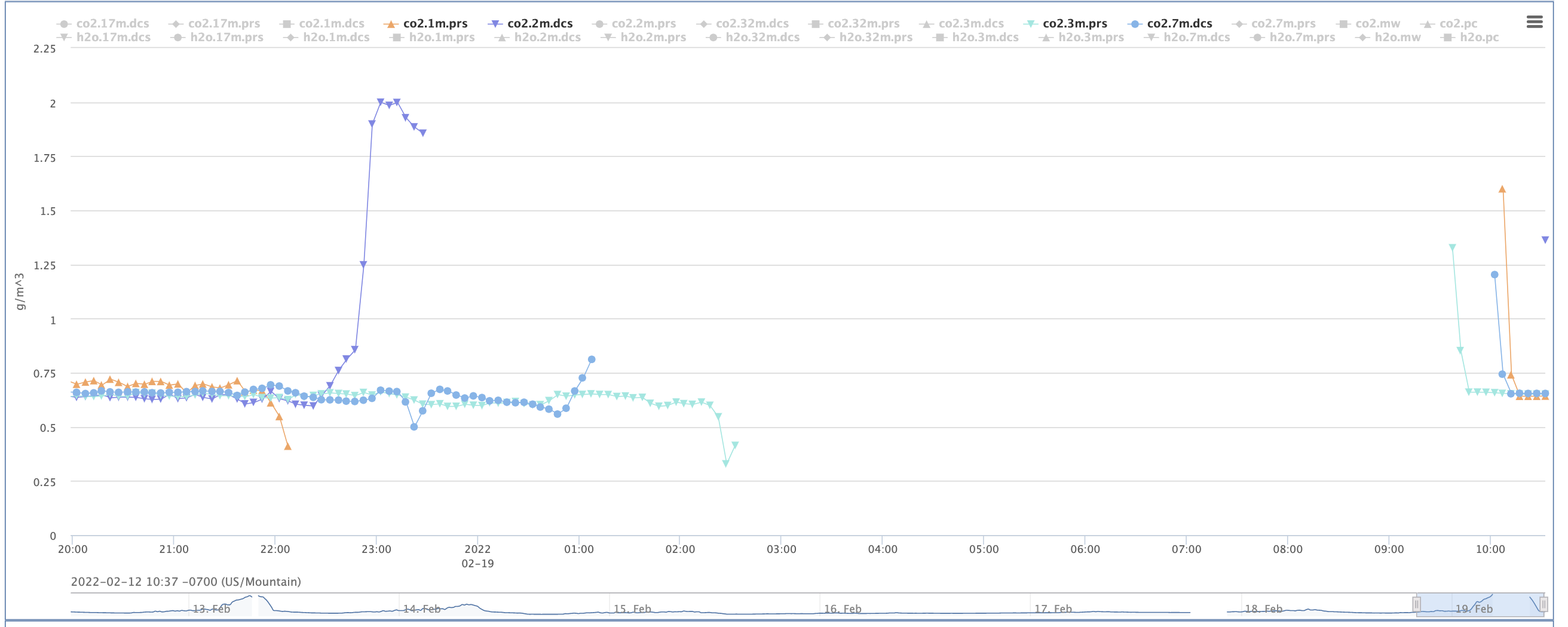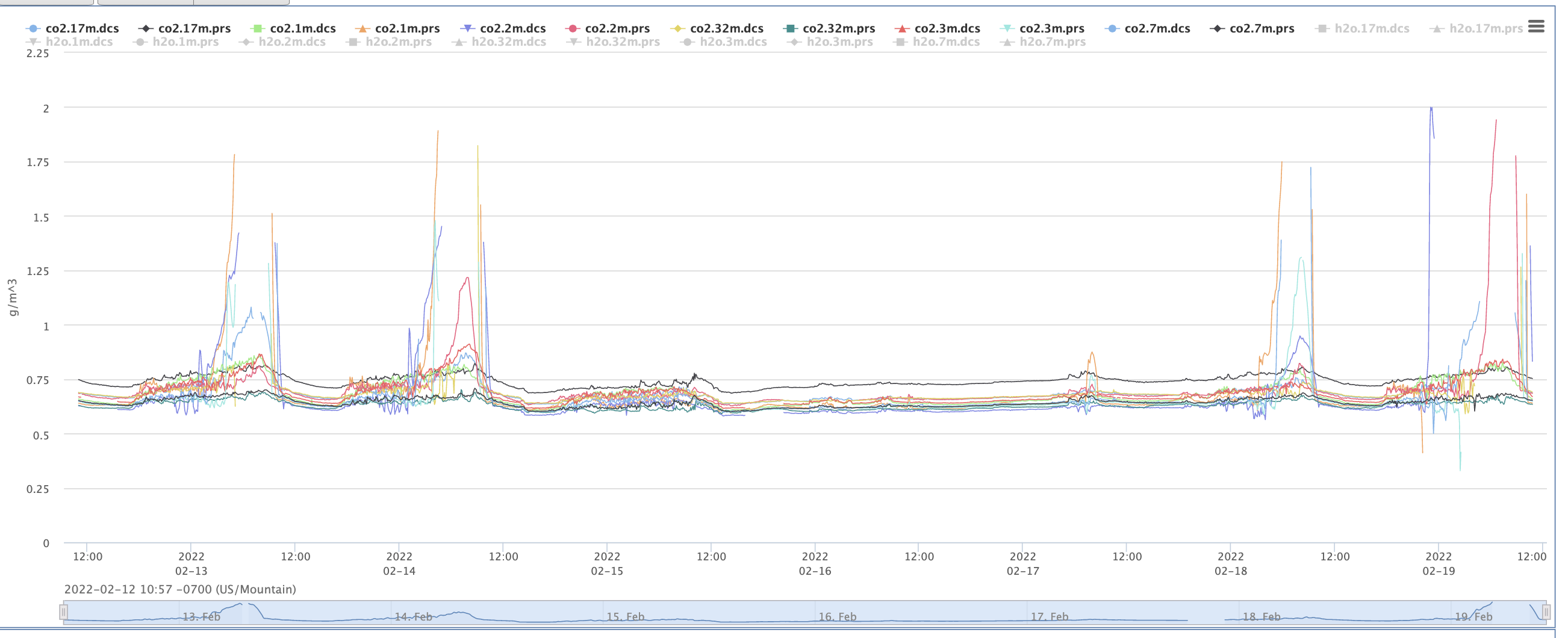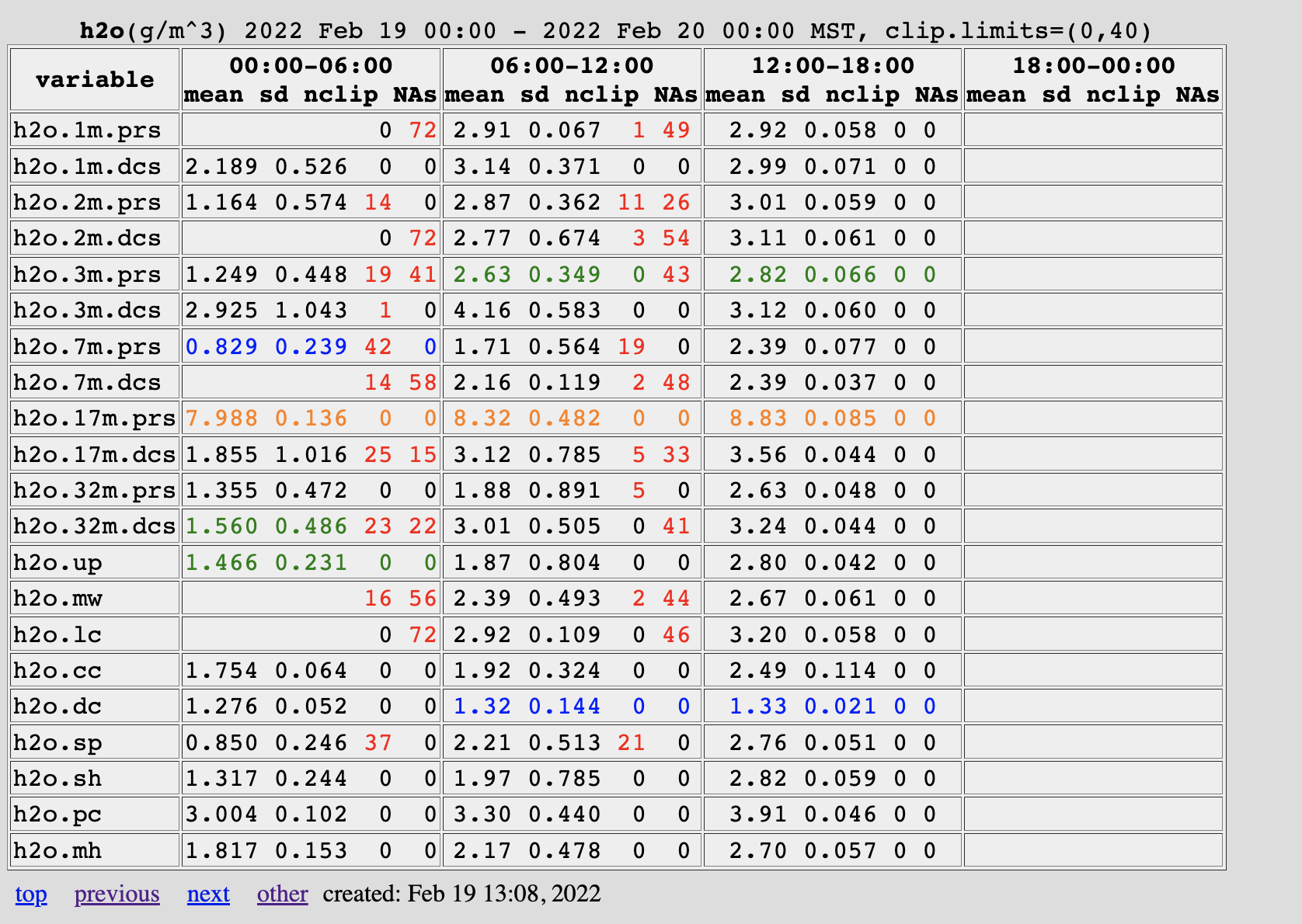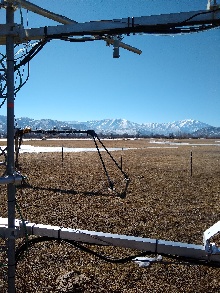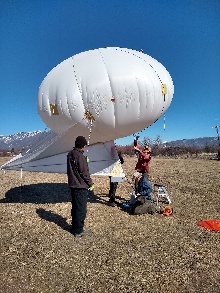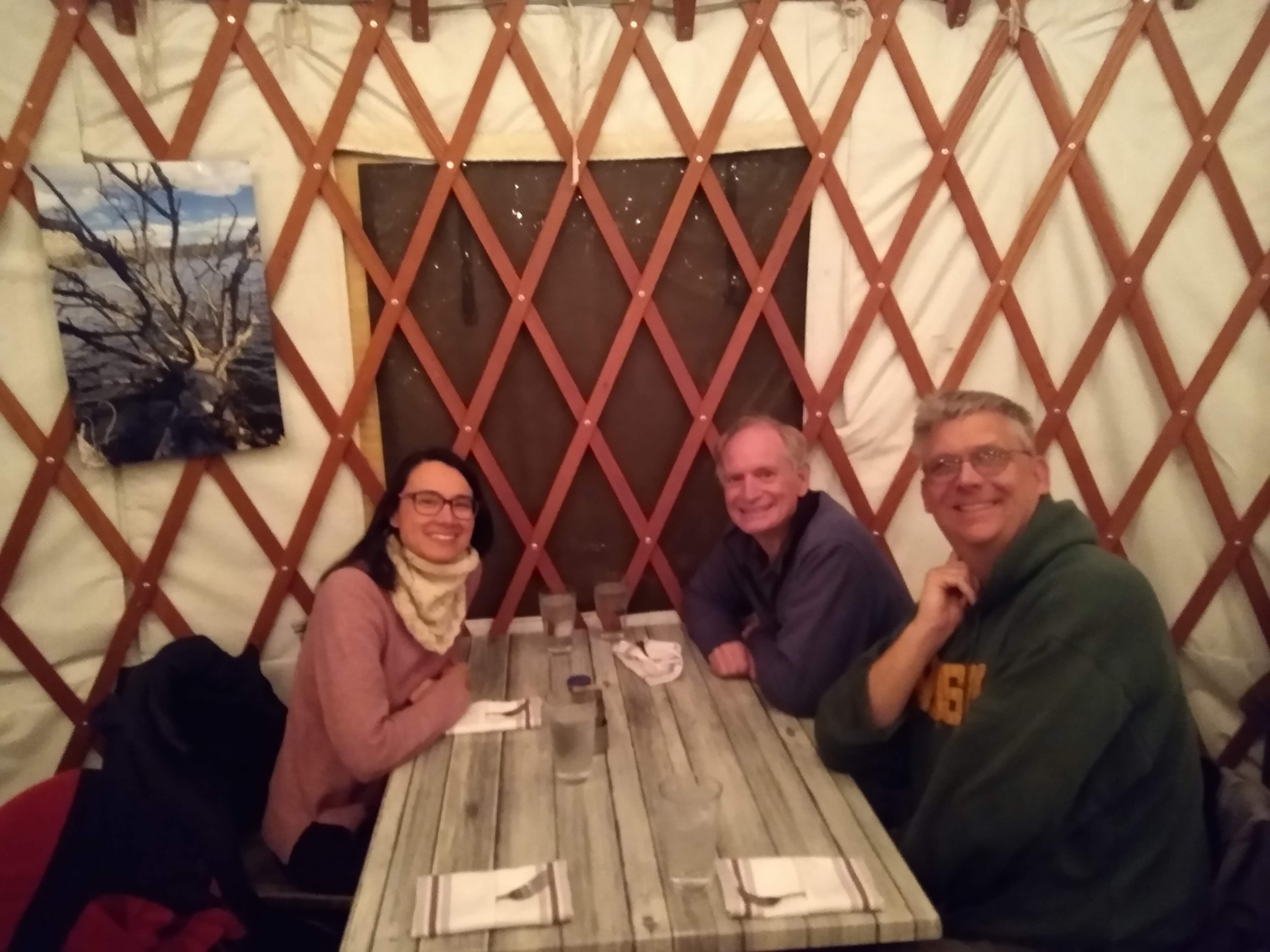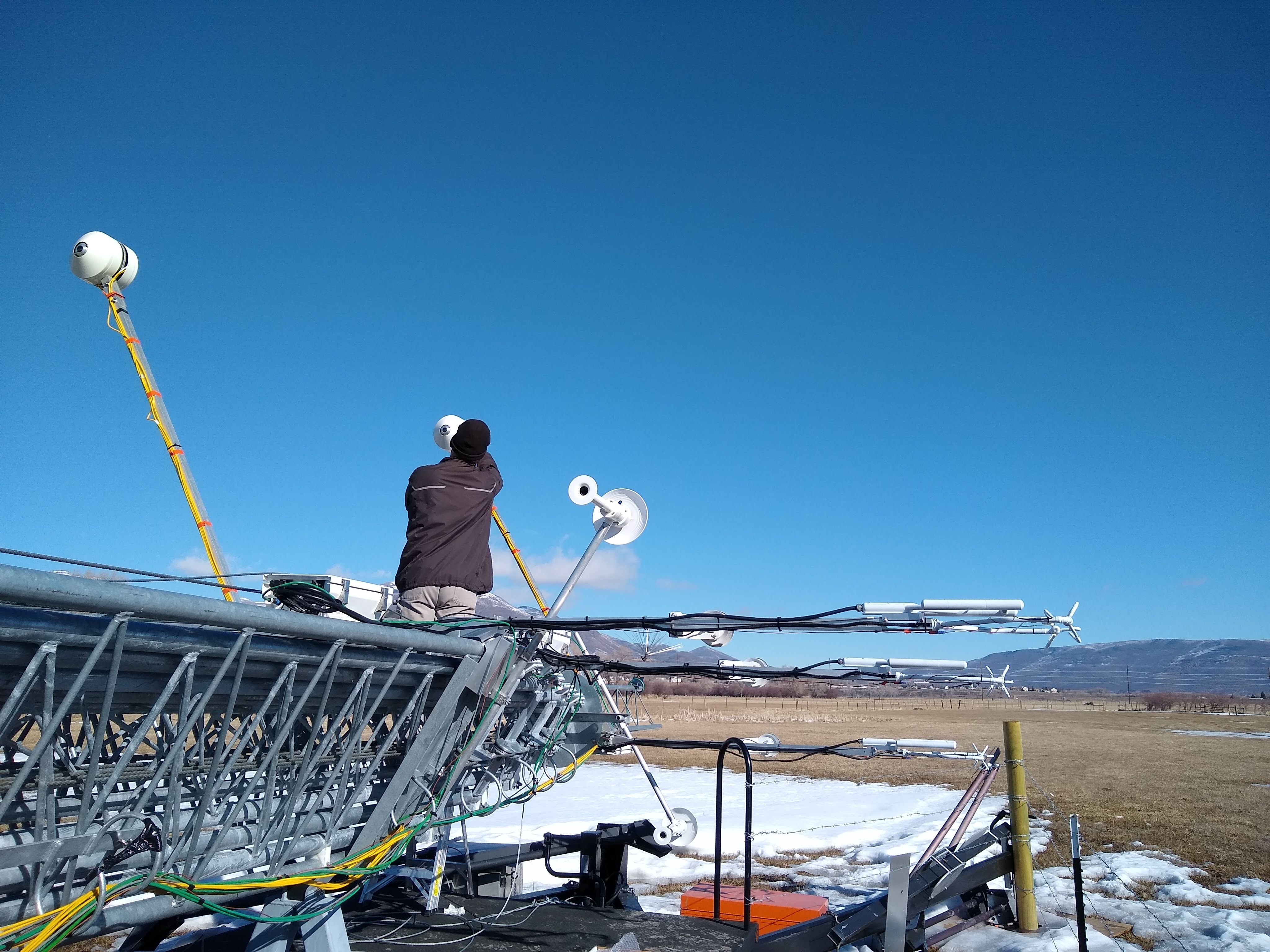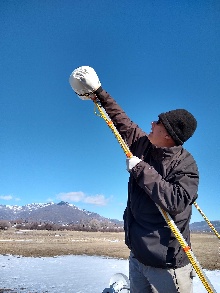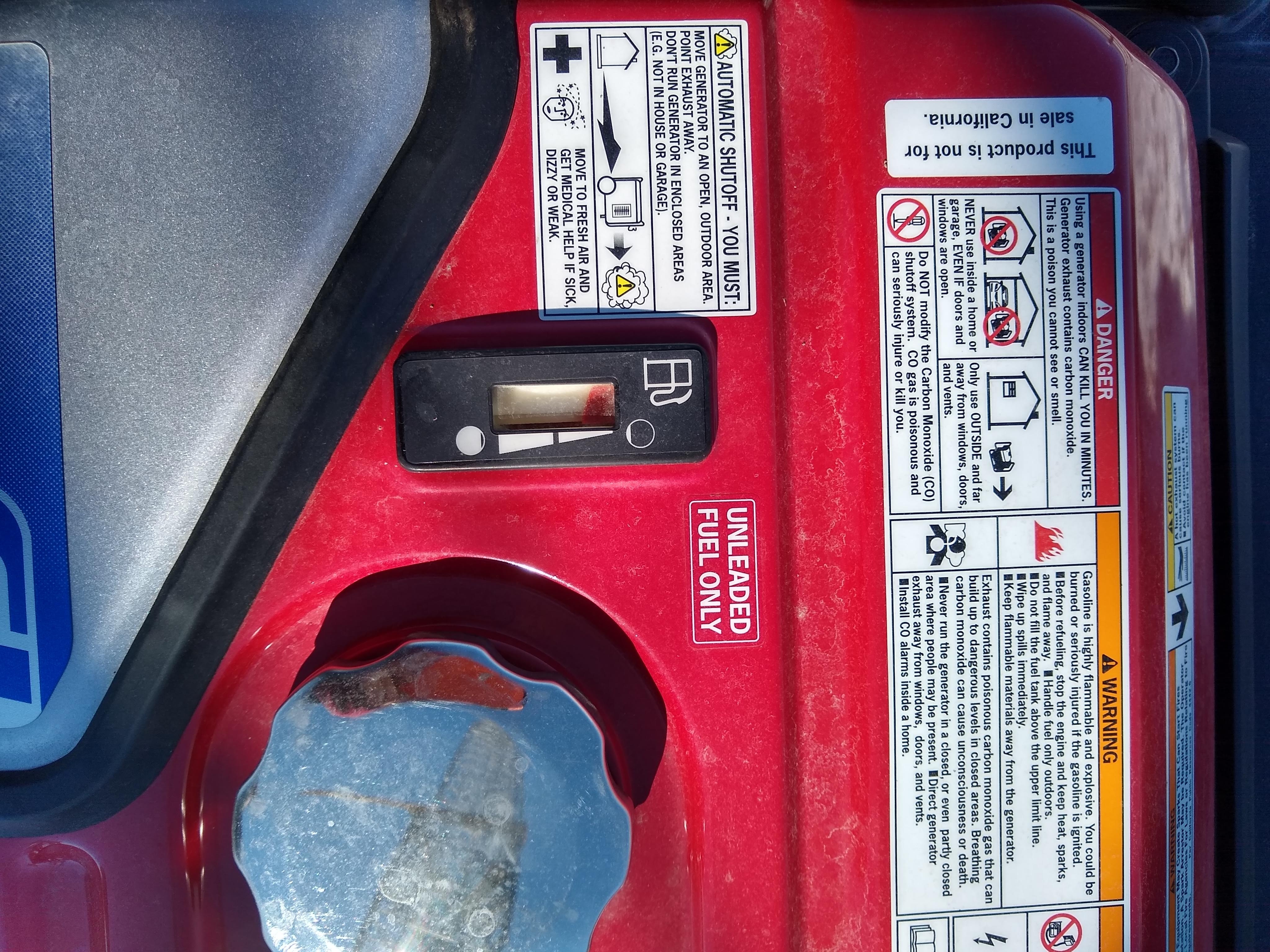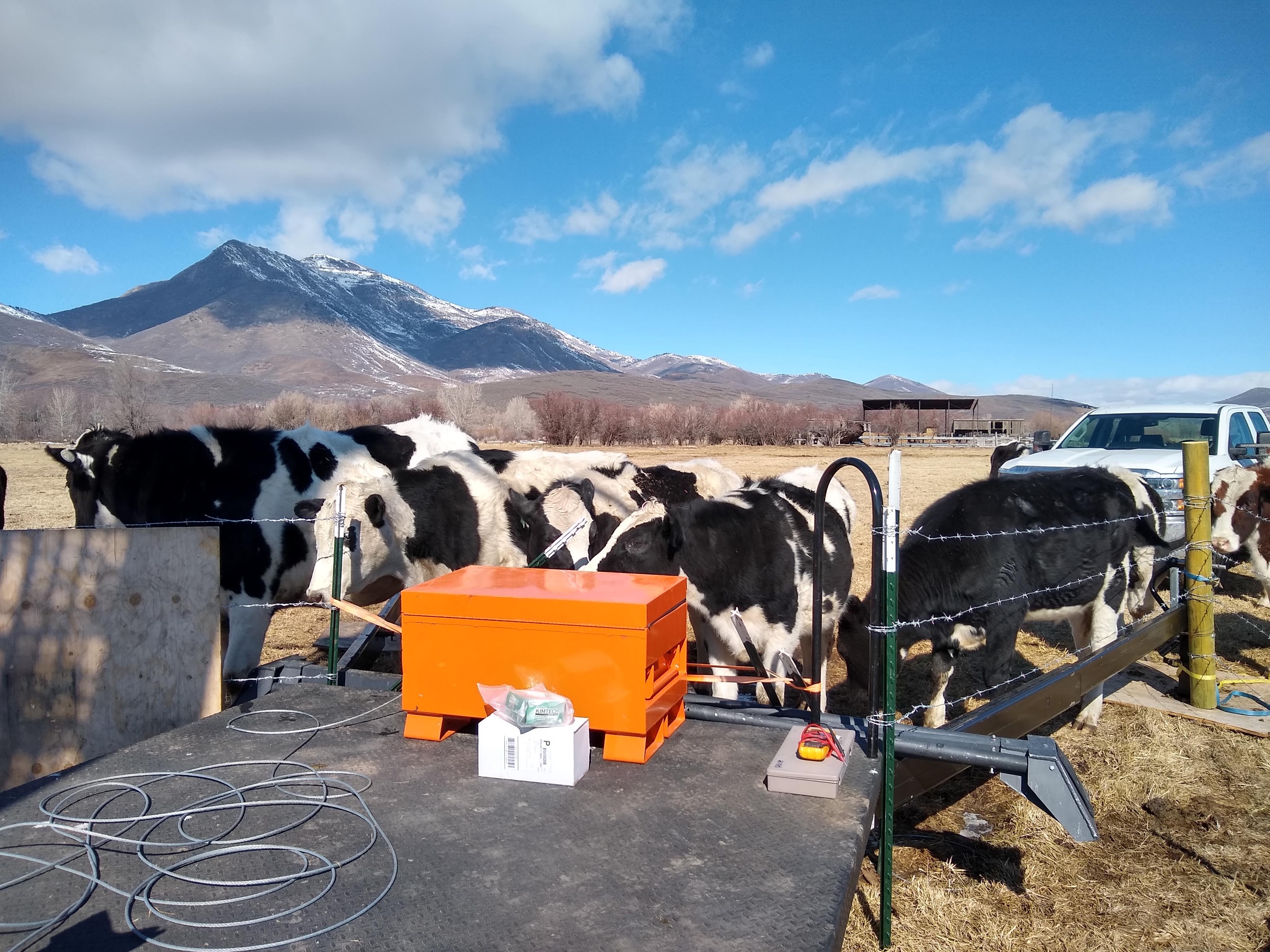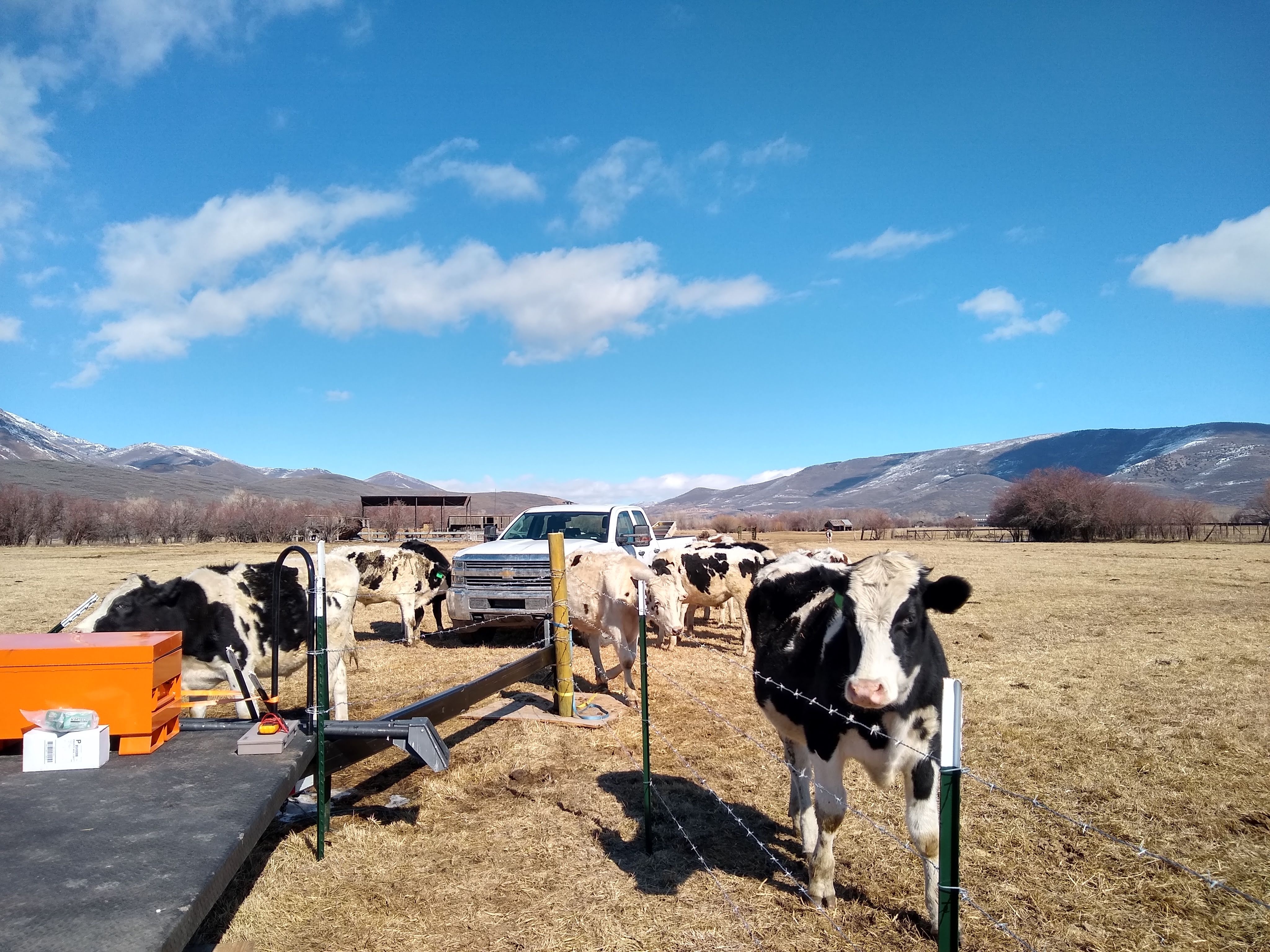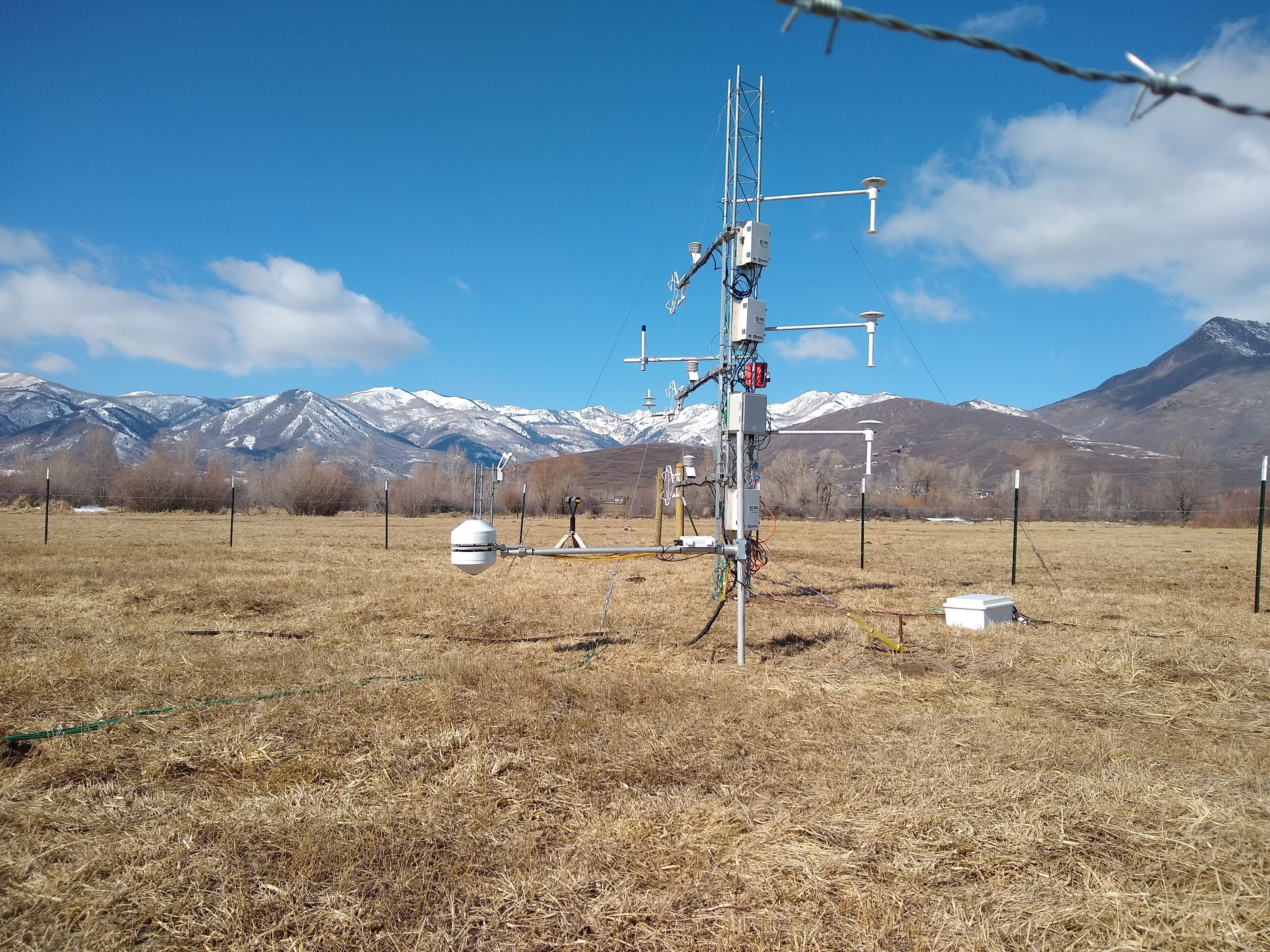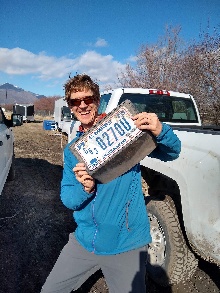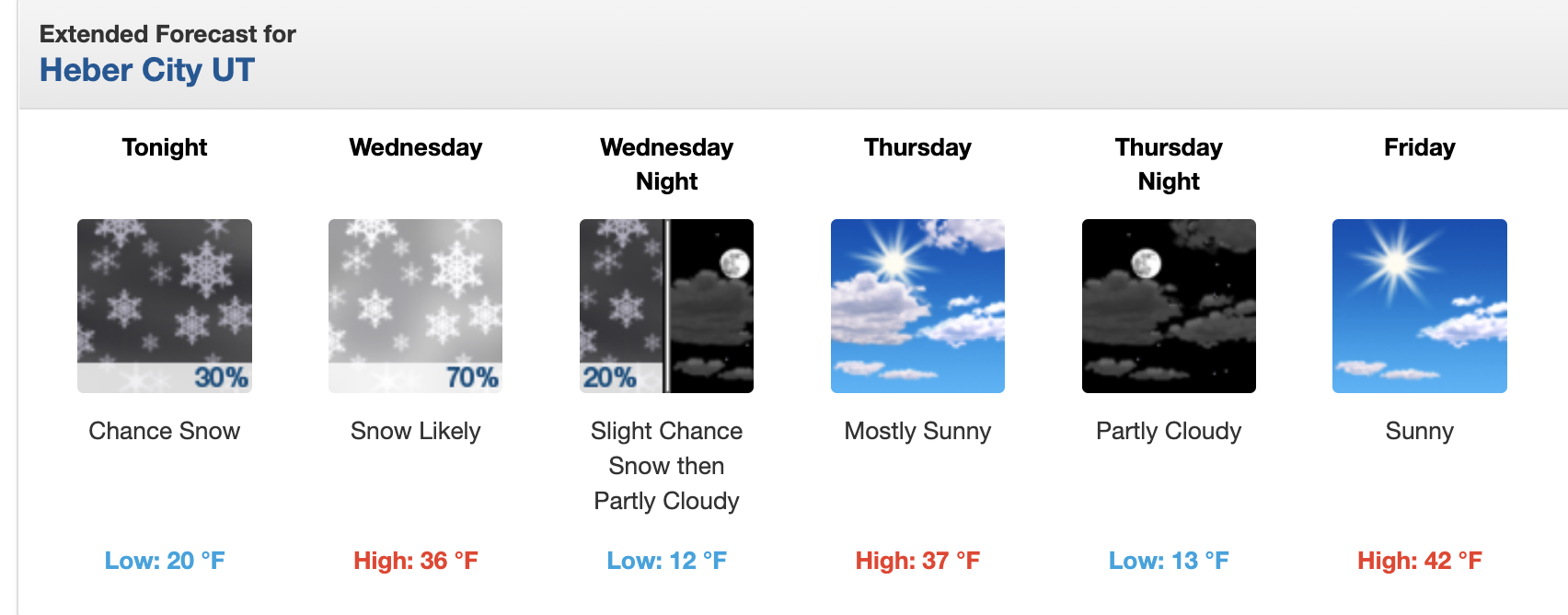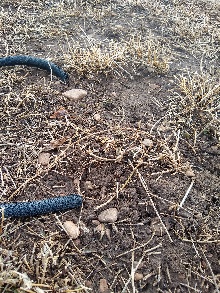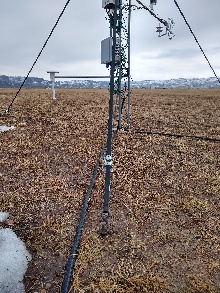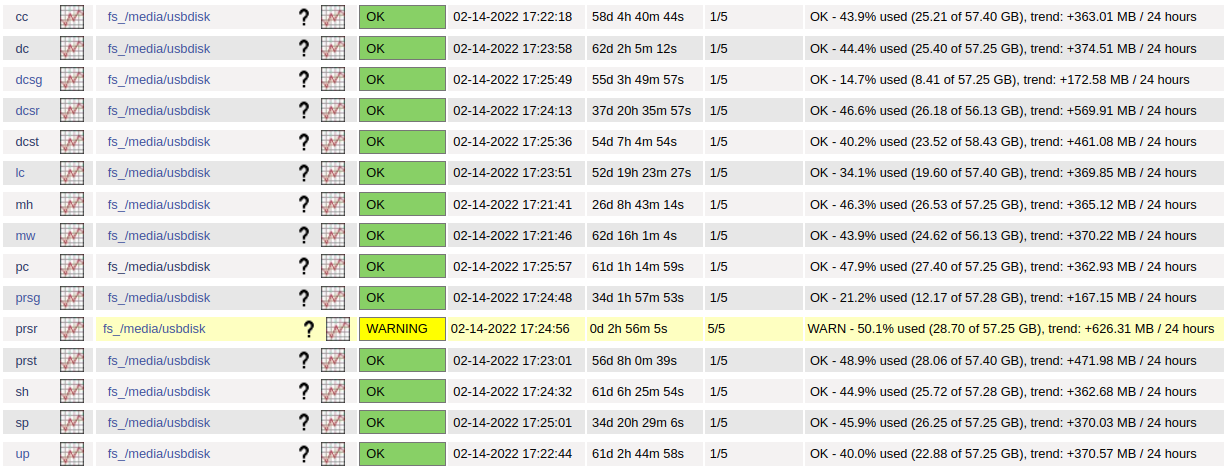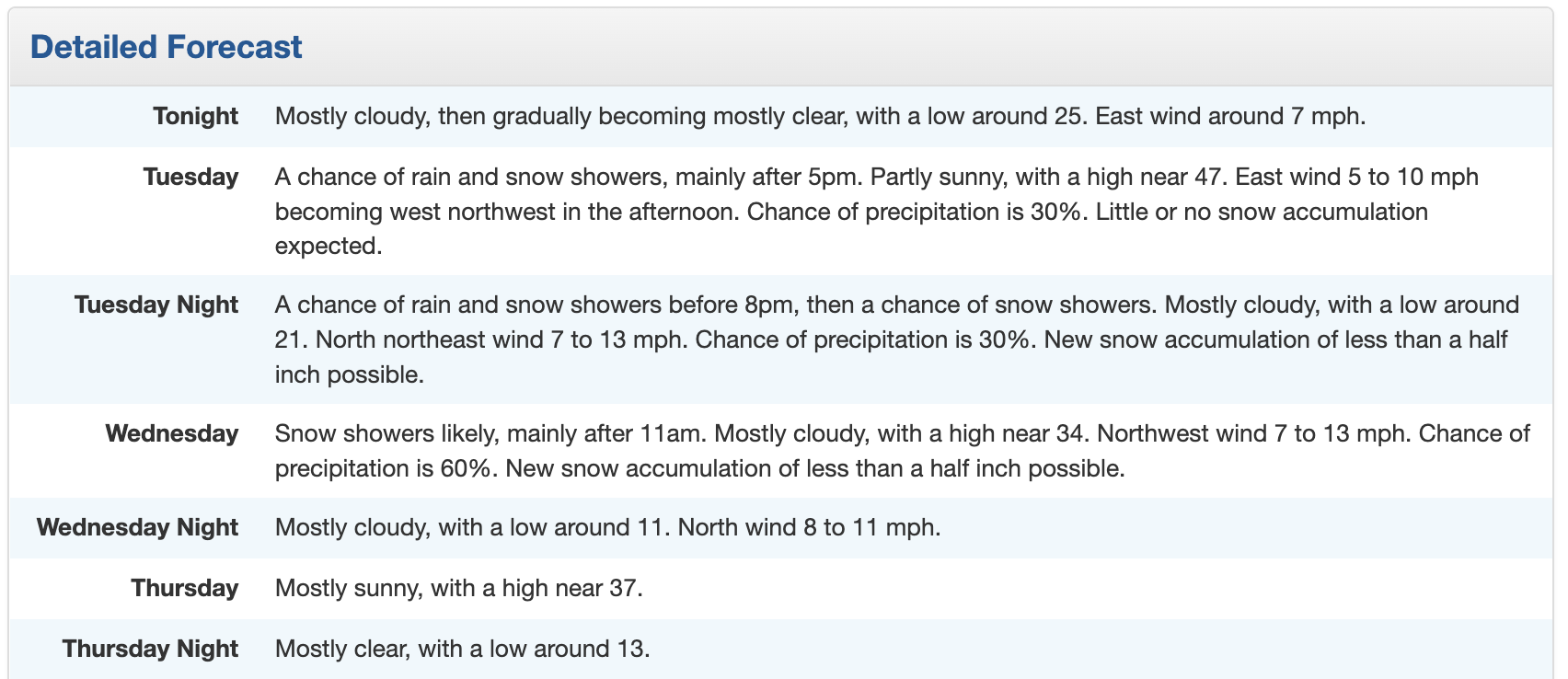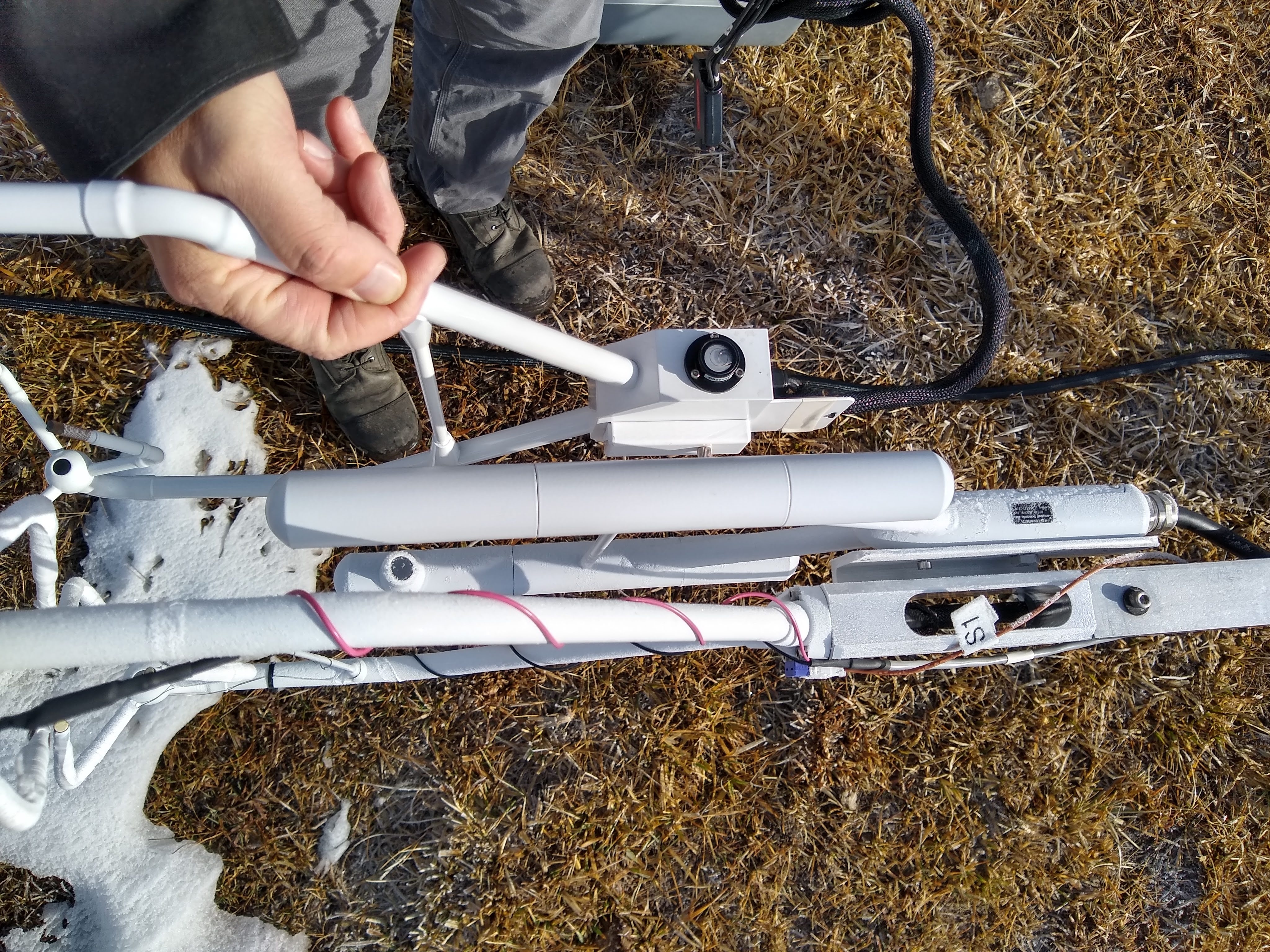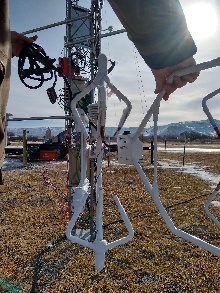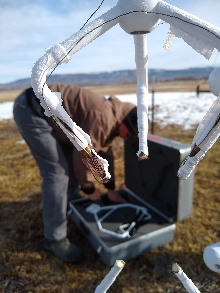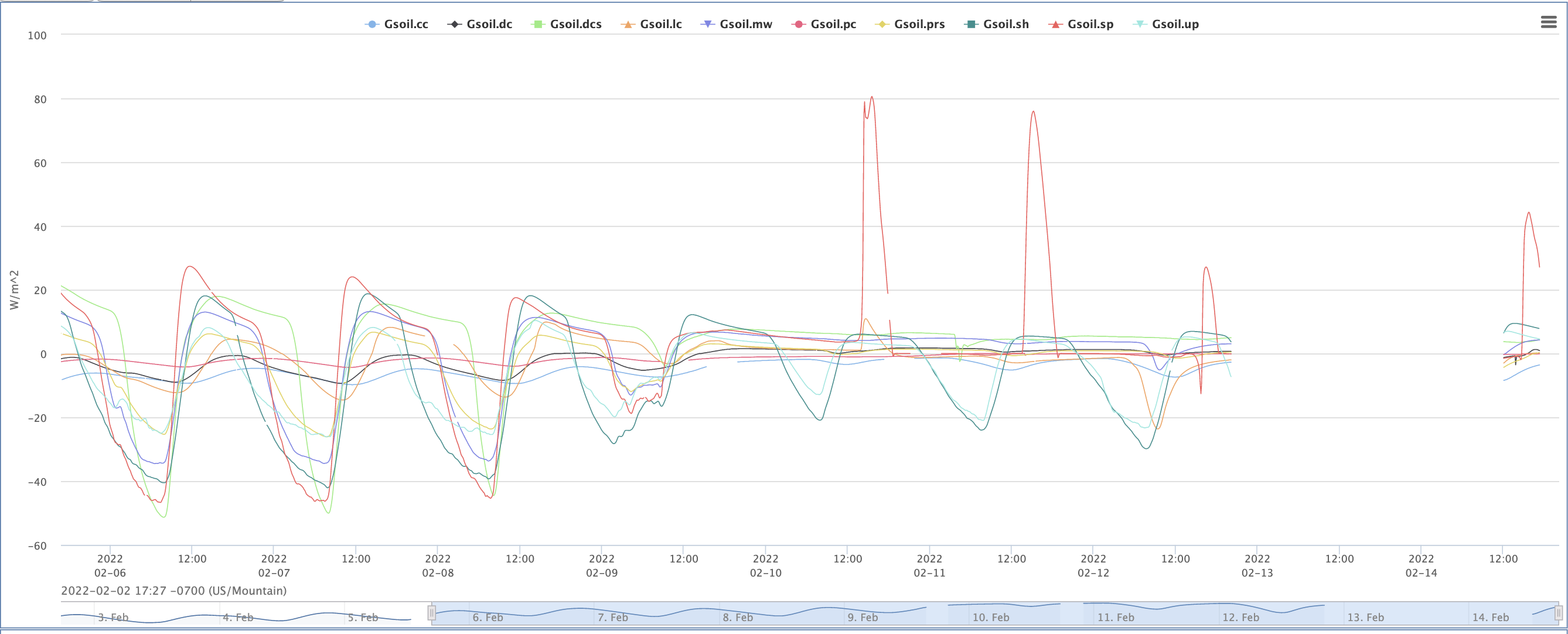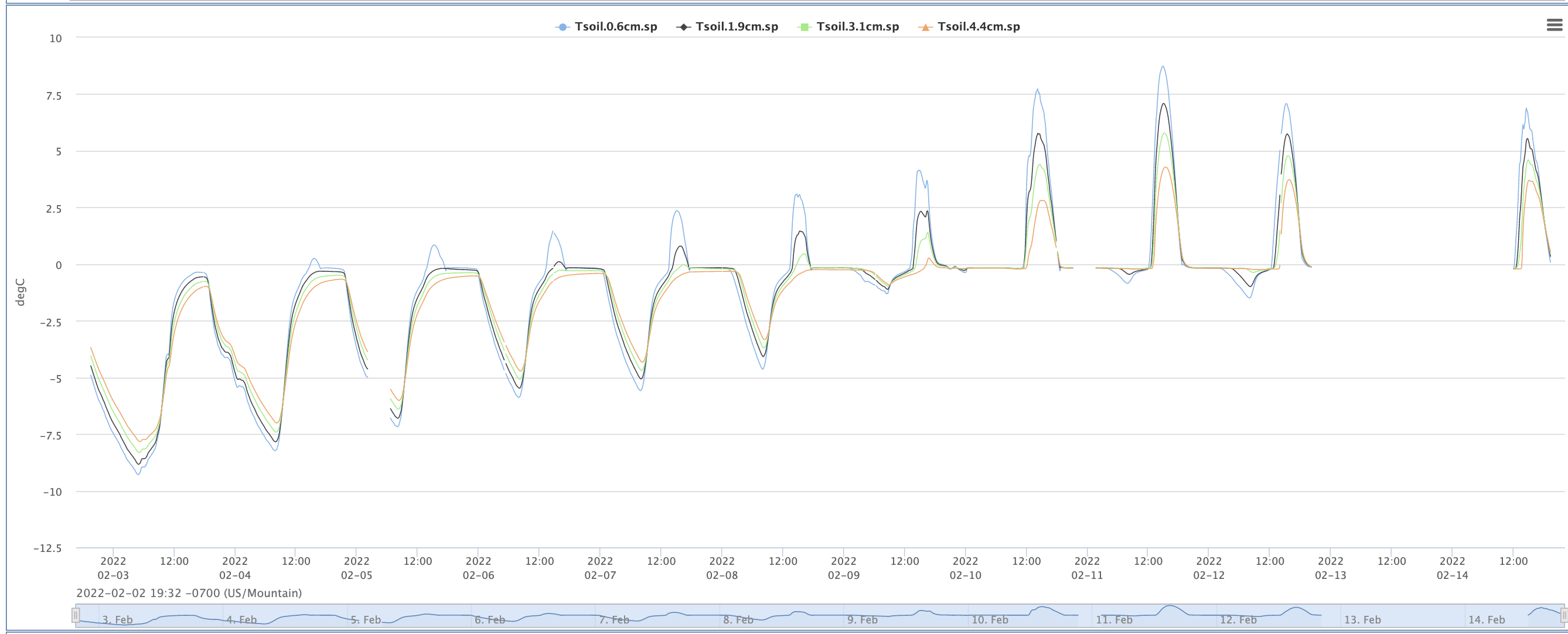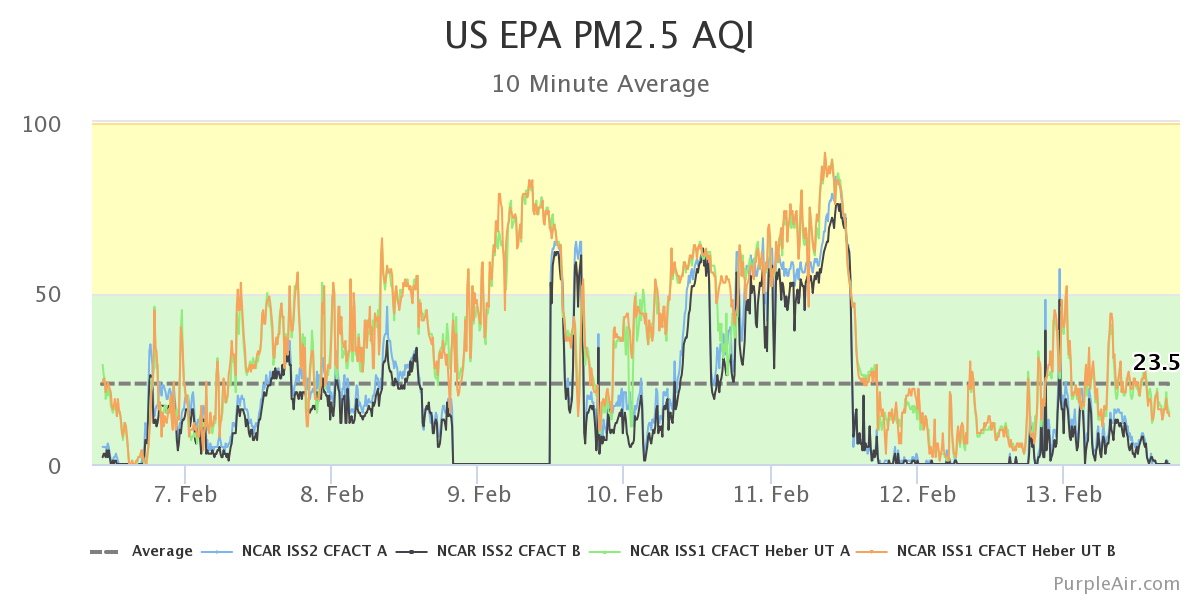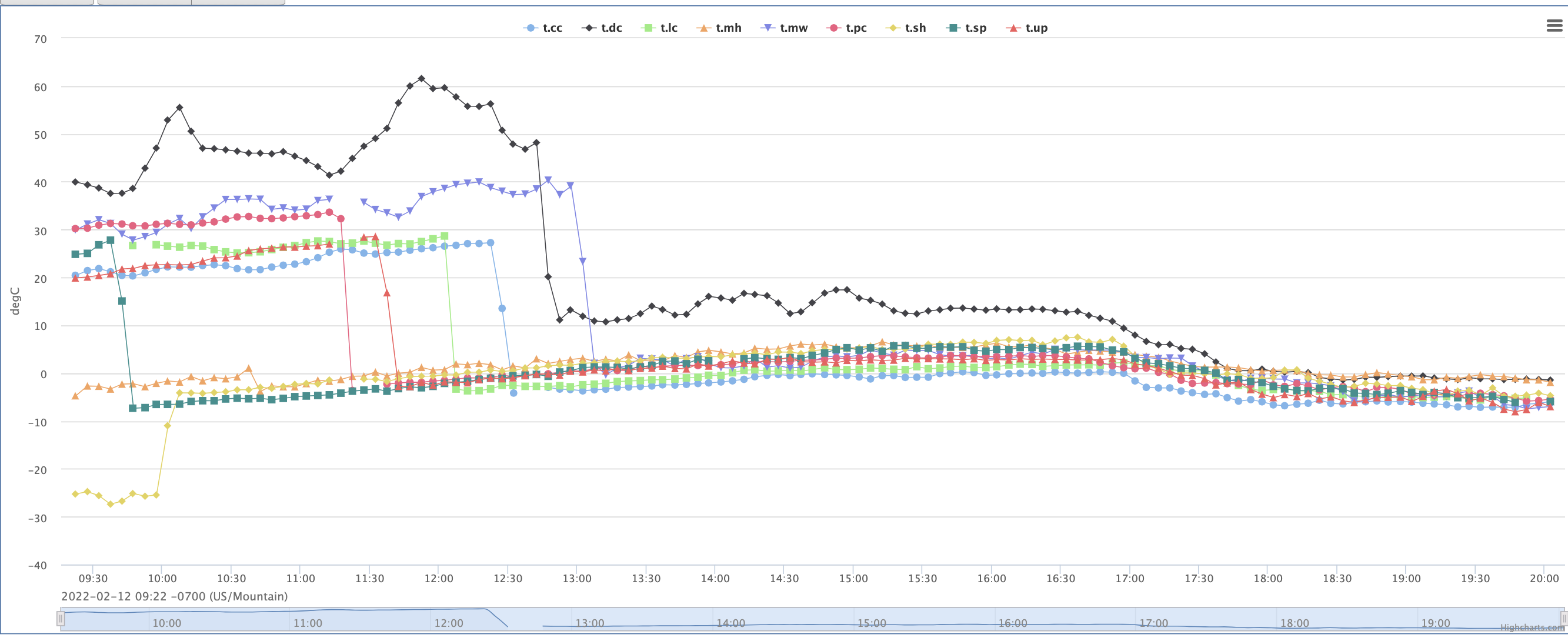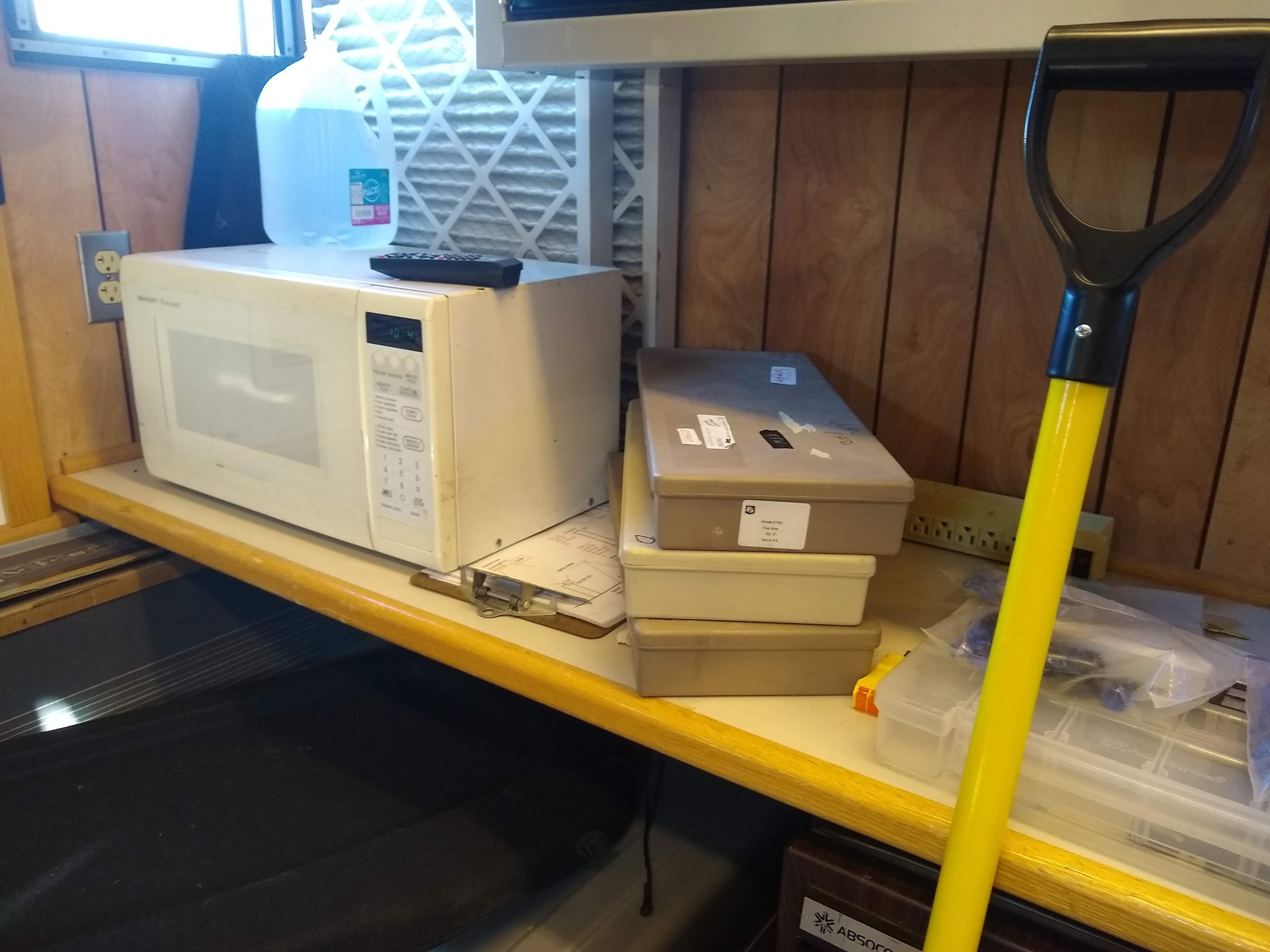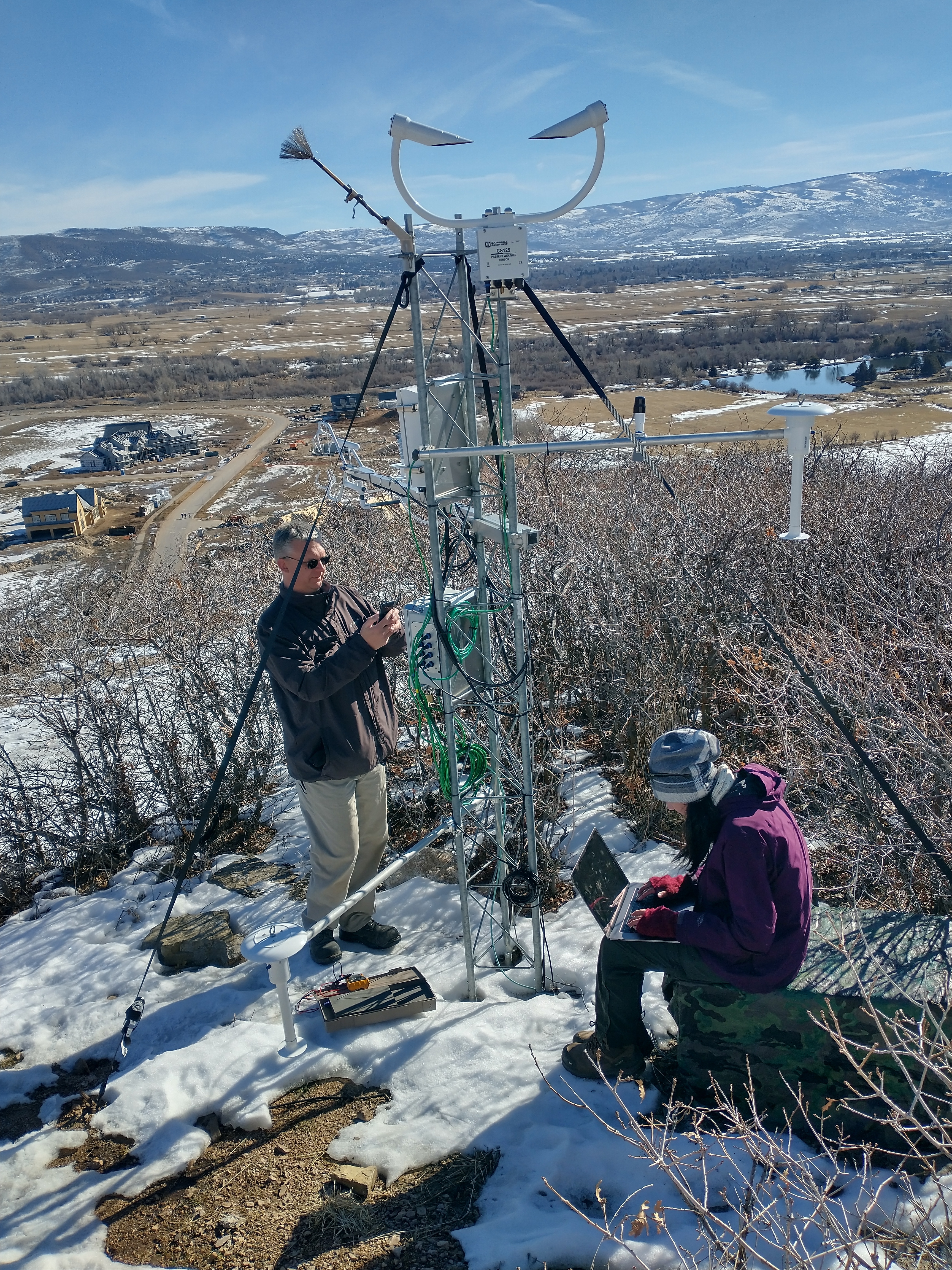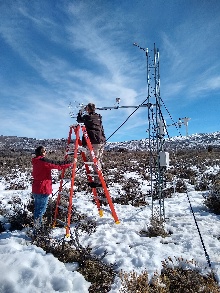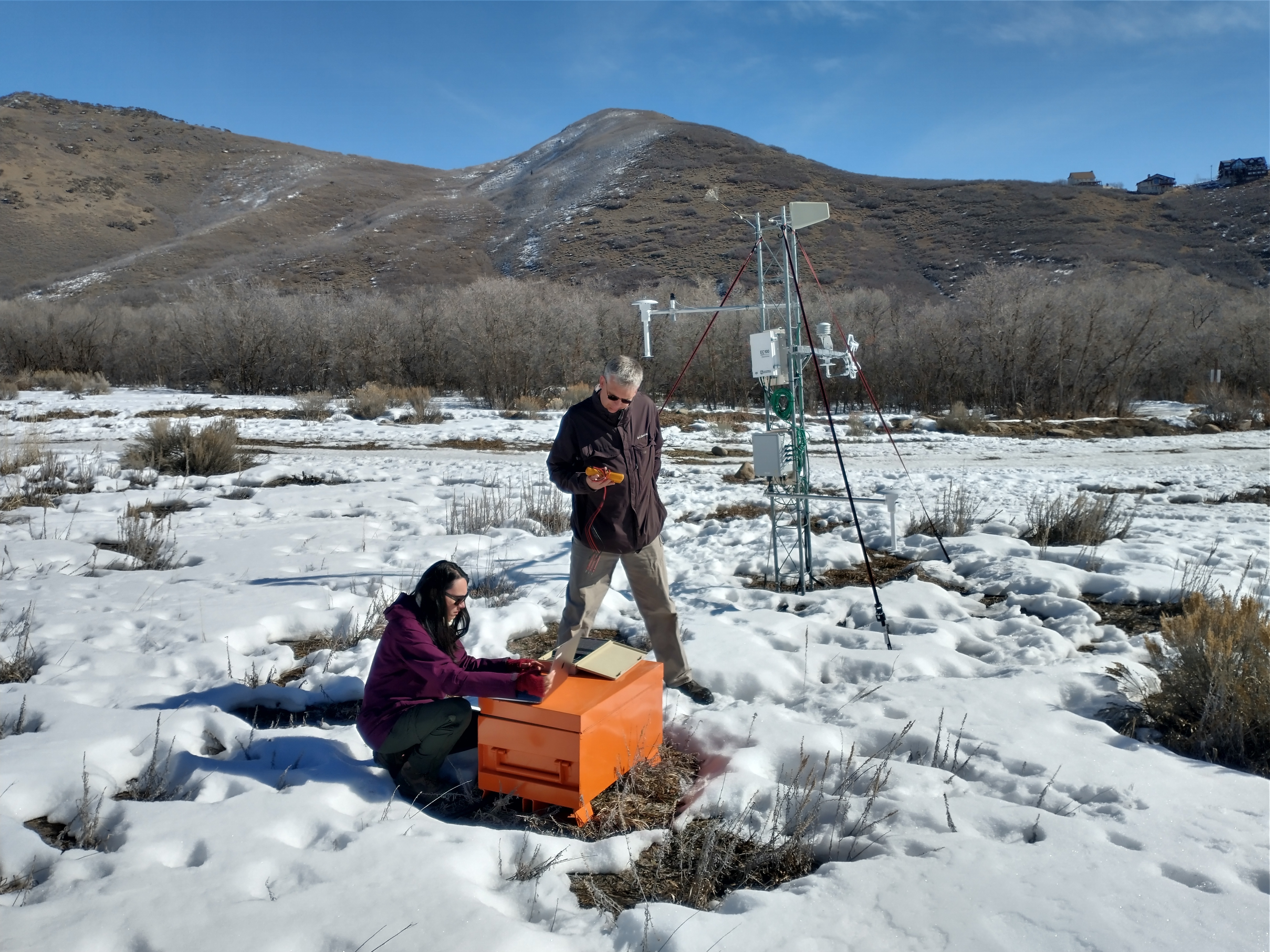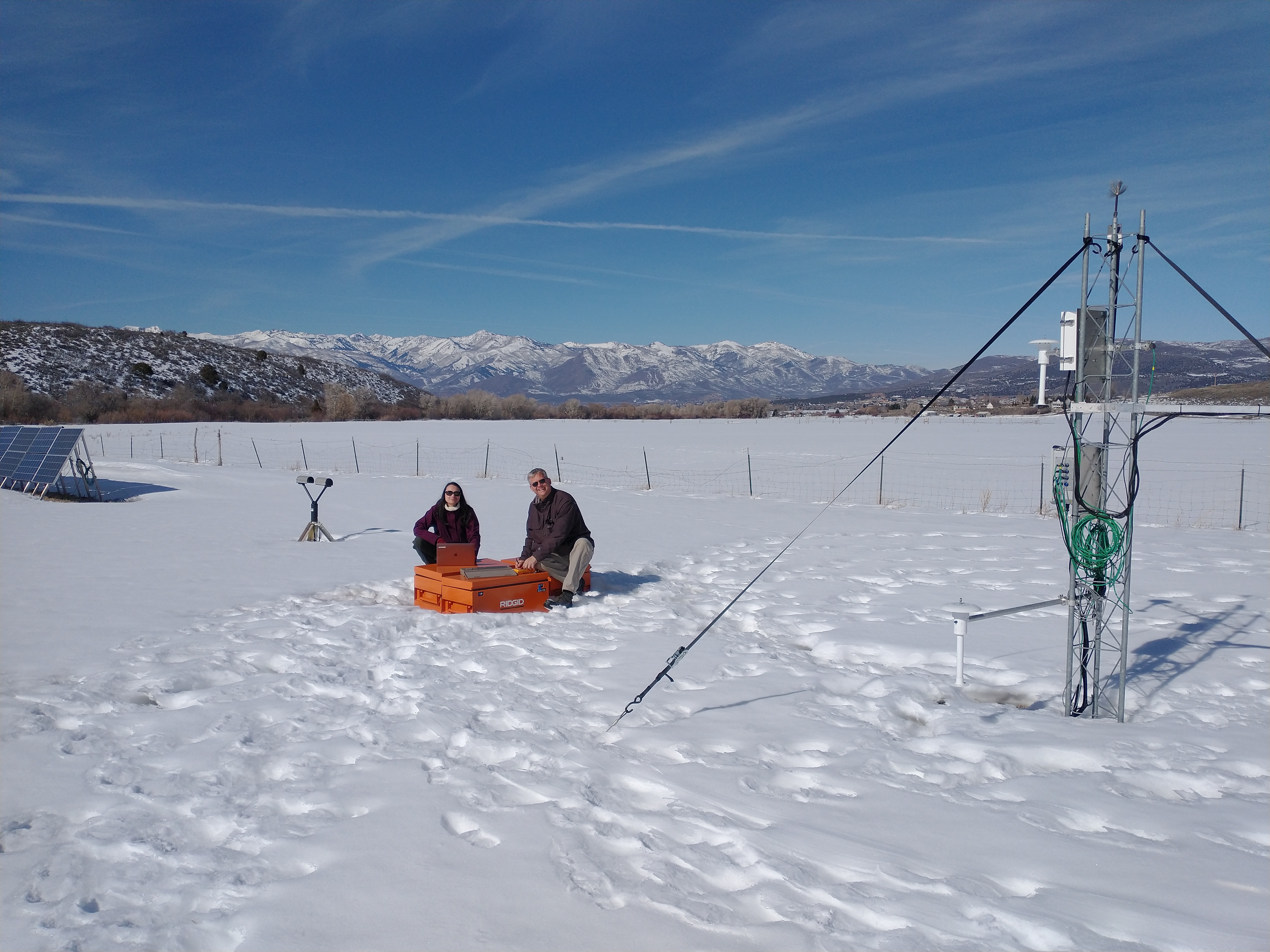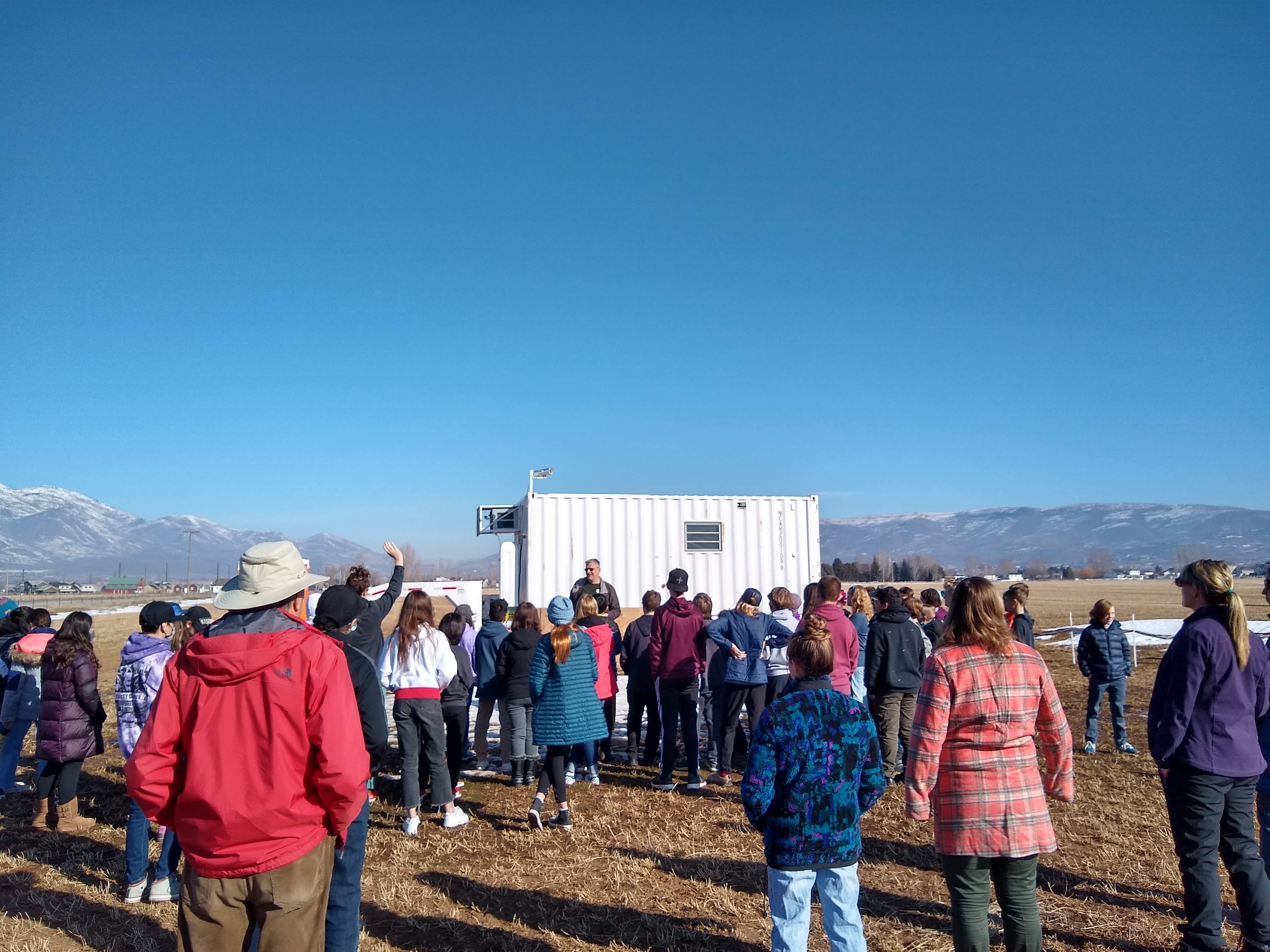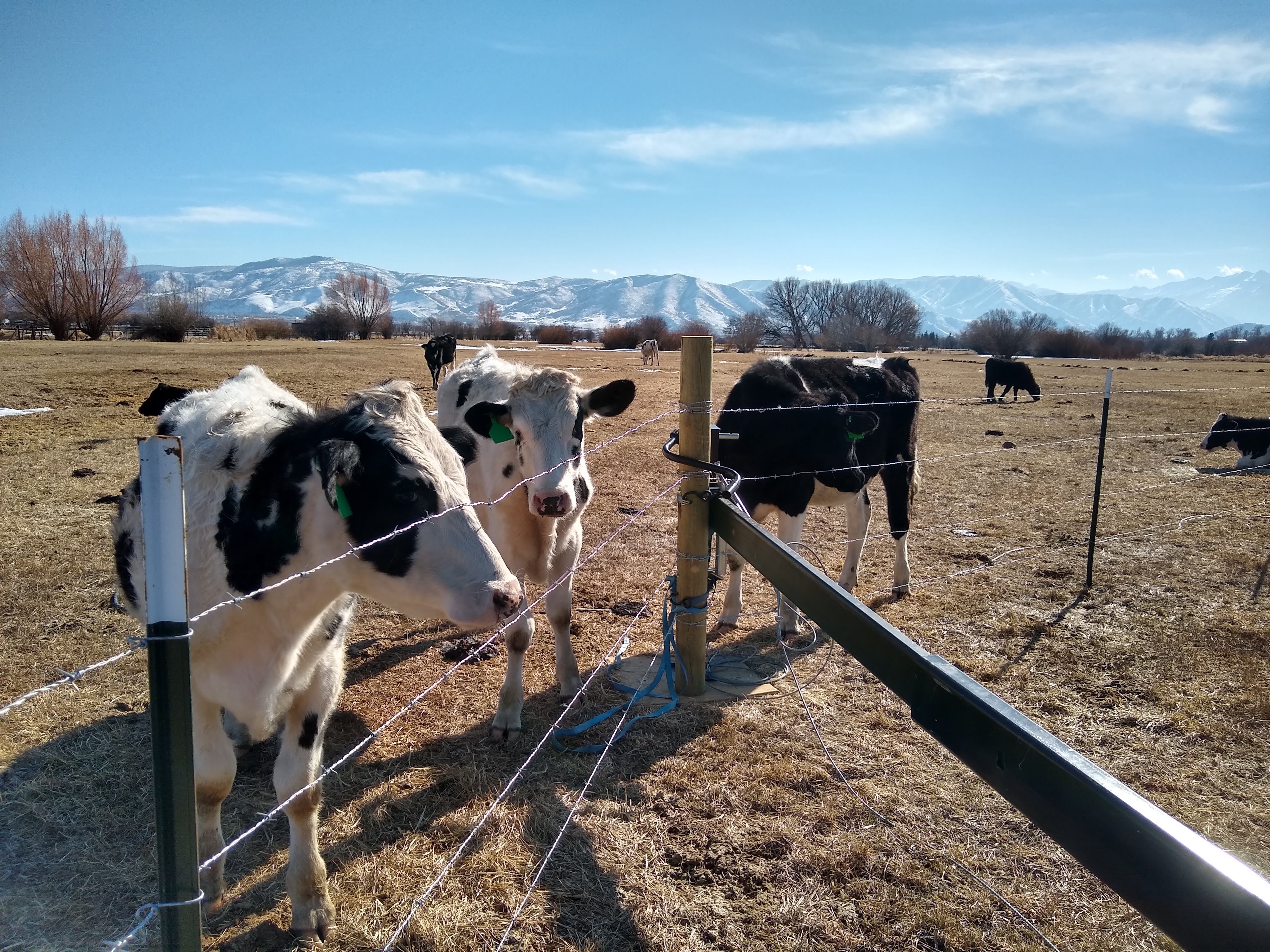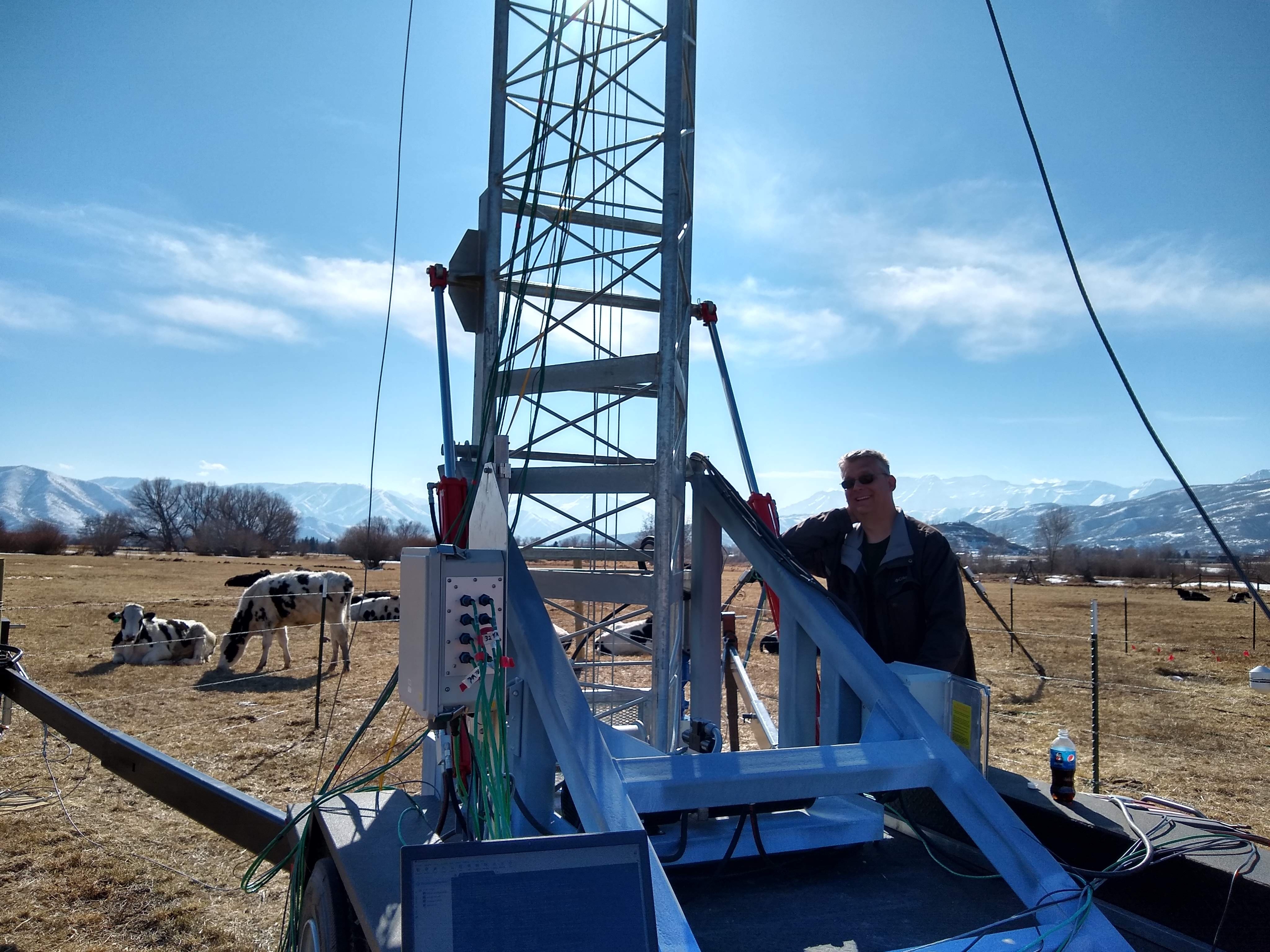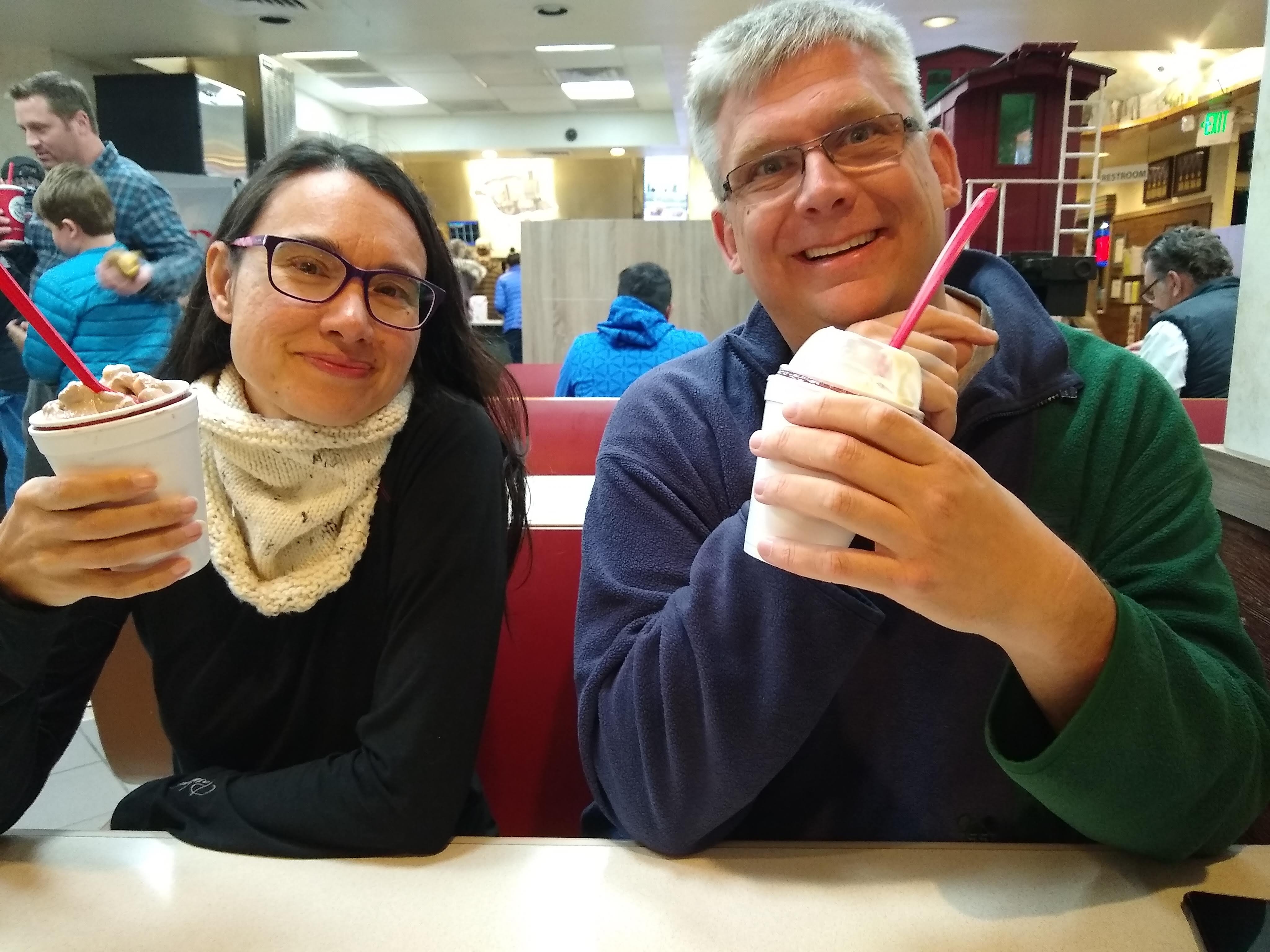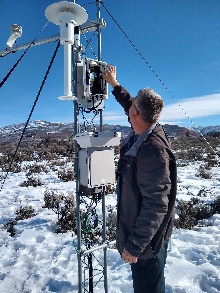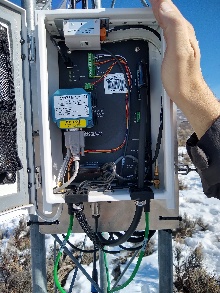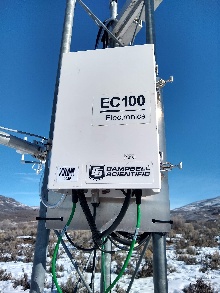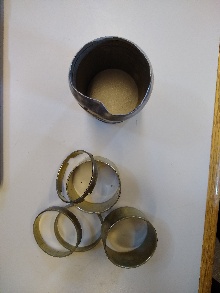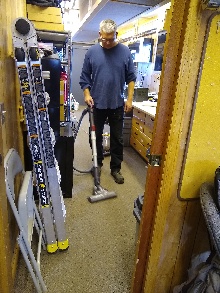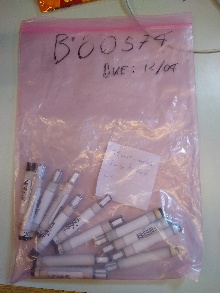Weather: Mostly sunny and calm. Highs in the mid 40's.
IRGA at the supersites - Noticed this morning that there was a long period of bad IRGA data at the super sites at certain heights. Up to 12 hours of bad data at some heights - longer than I’ve seen in the time series. In particular, heights
- irga.1m.prs
- irga.3m.prs
- irga.2m.dcs
- irga.7m.dcs
Zoom in on the past day
Past week
QC table screenshot
DCS
- Steve double checked that the heaters were set properly.
- We visited the DCS site to check the sonic/irga at 2m but there was nothing unusual to note.
- Steve noted that odd HRXL data may be due to interference in the field-of-view with the boom that holds the sonic/irga. I noted that in the DM tracker. We should do a closer examination of these time series during post-project data QC.
- While at DCS we met up with Eric and Sebastian is it looks like they successfully captured early morning fog during IOP8. They had just finished operating the tethered sonde. John and Steve helped secure the balloon
LC
- Steve visited the LC site to swap the bad sonic with Sebastian's (See Steve's Blog post). I made a note in the DM tracker.
ISS
Mid-afternoon we did a second check of the data and sensors at ISS1 then drove to the radiosonde site to launch the 415p radiosonde. We had a pleasant surprise when the PI Zhaoxia Pu from U of Utah stopped by. She assisted filling the balloon and launching the afternoon radiosonde - see John's ISS blog post.
Today is the last day John and I are supporting CFACT operations in the field. Sunday, Steve and Bill take over (Bill arrives tonight). It has been eventful!
Signing off. Time for supper!
Weather: Mostly sunny, calm. Highs in the mid 40’s.
Data checks today revealed no glaring issues as of this blog.
IOP08 today from noon Friday - noon Saturday
- PI’s called another IOP for today on the heels of IOP07. John and I launched the 2p and 4p radiosondes.
- Otherwise a rather quiet day.
Steve arrived today!
Weather: Mostly sunny. Calm to breezy winds from the South. Highs in the upper 30’s.
IOP07 was called today from noon Thursday - noon Friday
We first did our typical morning data check walk-through at ISS1 and the base trailer. Then off to the supersites to replace thermocouples and clean radiation sensors.
DCS
Replaced the thermocouple at t.7m. The towers were down from 1000 - 1111. John was the tallest and cleaned all the towers radiometers with the aid of a ladder, plus the ground-level one’s to take advantage of having the methanol/kimwipes on hand.
Note that the generator fuel is down to a 1/4 of a tank:
PRS
Replaced the thermocouples at t.3m and t.32m and cleaned all the radiation sensors. Towers were down 1130 - 1235. We had a large impromptu gathering of curious cows in the meantime. Initiating the car alarm worked wonders clearing the audience.
Note the generator fuel is half full.
Sebastian mentioned he visited PRS soon after us to install the ground-level thermocouples and had to re-leveled the radiometer again. It keeps drooping.
We launched the radiosondes at 210p and 415p (see John’s ISS blog for details).
Finally, Sebastian found a license missing from the front of the Silverado truck. The cows probably knocked it off. I knew they were up to no good! It's now with the truck.
Weather: Mostly cloudy and overcast. Definitely a chillier and moist day. Light winds mostly from the north. High's in the upper 30's.
A quiet data day for both ISFS and ISS.
While launching the 415p radiosonde Sebastian came by to ask about the remaining radiosonde/helium inventory (see John’s ISS blog post for details).
Sebastian mentioned he has had to re-level the radiometers mounted on the dark horse which have started drooping. This must be a recent event because while John and I last visited those sites we didn’t notice any sagging. Today he re-leveled the one at DCS ~350-410p. He also cleaned the radiometers with methanol and kimwipes at 0.5m and 2m at DCS and made plans to do the same at PRS by the end of today.
We discussed the thermocouples at the supersites and I noted that a few of the thermocouples were broken at the DCS and PRS sites since this morning:
- t.7m@DCS
- t.3m (rohn), t.32m (tt) @PRS
Plan for tomorrow
There is a tentative IOP7 planned for noon tomorrow (Thursday) to noon Friday. So we plan to lower/raise towers at the DCS and PRS sites in the AM to replace the broken thermocouples. We're bringing the ladder with us to replace the t.3m on the rohn at PRS. In addition, Sebastian suggested that we clean the radiometers at both towers - he has left us with kimwipes and a bottle of methanol. We will aim to do that as well.
Weather: Highs in the upper 40’s. A mix of calm to light winds. Cloudy to partly cloudy conditions throughout the day. It was nice not having to wear sunglasses for a change. Current NWS forecast:
Some excitement this morning!
While John was troubleshooting the RASS which wasn't working when we arrived (see John’s ISS blog post for details), I visited the SP site which was just down the road to check the soil sensors and measure an HRXL reference height (228.6 cm).
SP
Soils sensors remain buried but the soil looks porous. I saw no glaring issues.
Doing a walk through I noticed that one of the ratched cables was off the rebar so I re-hooked and tightened it (had a devil of a time figuring out how to loosen the strap on the ratched). I also tightened one of the other cables which was flopping in the breeze.
ISS1
Back at ISS1 Isabel texted that the DSM was off the net (great timing while we were at ISS1 !!). With Isabel’s guidance, I power cycled the DSM which re-started NIDAS but not the connection. Isabel suggested checking the ethernet cables - so I unplugged/replugged the ethernet cables in the DSM box, while John checked the ethernet attachment in the trailer. It looks like the ethernet in the trailer was strained and not well connected. John loosened and re-attached the ethernet more securely. Everything so far is green and working at ISS1.
John's troubleshooting got the RASS working and will closely monitor it (again refer to John’s ISS blog for details). The Profiler/RASS has been offline from ~ 1020a - 1150a.
Launched the 415p radiosonde.
As of today, the first DSM has surpassed 50% usage on it's USB data disk, so the fs_/media/usbdisk check in nagios will start to show yellow when that happens. It will turn red at 75%, but the DSMs won't reach that before the project ends. All of the data files are being synchronized, so there is no danger of losing any data because of this warning. I am working on making a backup of all the data before trying to clean older data off the USB sticks. The USB sticks are of course meant to preserve data especially while the network is down, but even if the network was down for the rest of the project the disks would not fill up.
Weather: Calm and partly sunny in the morning changing to mostly cloudy with light winds in the afternoon. Highs in the low 50’s. NWS forecast for the next days keeps changing. Here is the latest through Thursday:
Steve re-started NCharts which stopped reporting during the IOP (thanks!). My focus on Nagios/Dashboard showed from the times I checked all was running and still is.
LC - Still a lot of bad data. The only extra sonic available is not ours but Sebastian’s. The issue is that the mounting systems are different. John compared the two sensor mounts to see if he could construct something that will mount Sebastian’s sonic. We visited DCS this morning to look more closely at how ISFS sonics are mounted but determined it was not possible with the resources we have on hand. Both mounts are too different and John was also worried about being able to maintain an unmovable configuration.
DCS - I noticed that the wiring is exposed on one of the sonic fingers at 1m. Doesn’t seem to be affecting the data quality, which is good. (let me know if I should put tape around this)
SP - Noticed these peaks appearing in the SP soils. Tsoil is not like the others and all levels are well above 0. Will plan to swing by and check this site out tomorrow morning. Also, this site is missing an HRXL reference height.
ISS - Launched the 415p radiosonde. See John's blog for details.
Finally, a very satisfying part of our day was getting gas and finally cleaning the filthy windows inside and out the truck. I can see!!!
Got a note from Eric that ncharts wasn't updating, so just restarted dsm_server on barolo...Steve
Weather: Not much different than yesterday (see yesterday’s photos). Calm, sunny, quiescent. I’ve been monitoring the PurpleAir AQI over Heber that includes the two ISS sensors and the air has been clean overall, particularly yesterday. Probably the cleanest air I’ve breathed in a while!
The Quiescent IOP06 passed without a hitch. A quiet data day. The thermocouples are running. You can see (below) the jump in the time series where we changed each sensor yesterday.
Sebastian mentioned that the priority is keeping the thermocouples on two supersites functioning. If they break at the satellite sites, we are to ignore them.
NOTE: Today, he took down all the ground-level thermocouples at the DCS and PRS Rohn towers in anticipation of the prefrontal winds that are forecast to start tomorrow. Snow is expected Monday-Wednesday.
For tear down there are 3 empty boxes in the trailer currently near the microwave:
A "Quiescent IOP" (IOP 6) from noon today through noon tomorrow; Persistent fog radiosounde plan.
We spent the morning adding thermocouples. In order of time:
- SP - 945a
- SH - 10a
- MH - 10:39a
Swapped out the thermocouple that was already there. This was a different type, so we swapped it anyway to be the same type as all the others. Put old one the box #2.
- PC - 11:20a
- UP - 11:39a
- LC - 12:07p
- John pushed the wires into the sonic more tightly - thinking there was a loose wire connection. Will monitor to see if that fixed it.
CC - 1230p
DC - 12:47p
MW - 1:04p
ISS: Launched the ~2p and ~415p.
Weather: Haze, broken cirrus clearing by the late afternoon. Calm to light winds.
Today was a rather full day.
- 10-11am we met with ~60 middle school students in front of ISS1 for a demonstration of all the instrumentation.
- The rest of the day was spent raising/lowering towers to replace thermocouples 17m@DCS and 7m@PRS, respectively. I learned about limit switches when the DCS tower failed to rise! We had a number of unexpected visitors come by PRS
This brought us to ~330 with plenty of time to launch the 415p radiosonde that went off without a hitch.
We ran into PI Eric Pardyjak who wants us to start populating the satellite sites with thermocouples. We picked up 3 boxes of functioning thermocouples and plan to spend tomorrow adding them to all the sites. Hopefully, we’ll get a bunch done by the start of IOP6 planned for noon Saturday - noon Sunday.
We ended the day on a high note with shakes at Dairy Keen.
Weather: Low level stratus clouds with cirrus above throughout the day, plus haze. Highs in the mid-40’s.
A calm data day. No more soils to sample. Data looks good.
LC
- There was a 6hr window of no sonic/irga data last night. Intermittent good data continues for that sonic. We have no extra sonics to replace so this is the data reality for the rest of CFACT (made a note on the Tracker for the data report). There’s still some good data that comes in so it’s not a complete loss.
- I forgot to mention we may have stepped under the Depth sensor until we noticed it. I can see it in NCharts so I added a filter to that for our time there in the QC/lc/Snow.dat cal file.
We demoed the 415p radiosonde launch to a group of UU grad students. It also doubled as a tutorial for three of them who will be launching during IOPs. We launched a little later than scheduled ~430 because we had to reboot the computer/Vaisala when the radiosonde failed during the ground check. John took photos.
There is a tentative IOP6 planned for Sat/Sun so tomorrow we plan to replace thermocouples at DCS (17m) and PRS (7m) tomorrow in anticipation. Middle schoolers are visiting ISS1 for an hour tour @10am.
Weather: Woke-up to a low stratus cloud deck that cleared by mid-morning followed a mix of of low and high level cirrus. Calm winds until the second radiosonde launch where there were light surface winds from the south. Highs in the low 40’s. You can feel the moisture in the air that was absent since I arrived.
A little more excitement today.
Site LC
- We replaced the EC100 ~ 1030AM but the sonic light was still blinking red here and there. So it looks like the EC100 didn't fix the intermittent bad data.
- Sadly, the soil corer was dented while taking a soil sample (See blog post). Steve advised to stop taking further soil samples.
Thermocouples
- Checked the thermocouples for Sebastian at the supersites. DCSR showed t.17m was not working. At PRS, t.7m is out.
IOP5
- Launched the 2 soundings
- ~ 2p - 1st balloon had a leak
- 415p - radiosonde blinked red so we had to restart the computer. This sonde was a coordinated launch with the tethered system. Sebastian and Alex were present for that.
We went to LC site this morning to replaced the EC100 but also to take a soil sample. Unfortunately, the corer got dented in the process of hammering it in. We managed to get a soil sample out, but John had a tough time prying all the inner rings out. You can see in the photo below the bottom part is dented out of shape:
Back at base, John made a valiant first attempt to see if the inner rings will fit back into the corer, but it's not trivial to get them all in, which means if we take a sample it'll be tough getting the samples out.
John is now vacuuming. I am observing and eating potato chips.
Weather: Same as yesterday. Haze, sunny, calm winds. High in the low 40’s. NWS shows a large blocking high pressure system centered over the eastern pacific, just west of Washington which is affecting the entire Western US. Looks like we’ll be under this system for the rest of the week.
Drove Matt to the airport while John attended a telecon this morning. I moderated Holger’s EOL seminar in the afternoon while John launched the 415p radiosonde. Thanks John!
- Nothing disruptive to report in the network connections - Nagios has been green all day for all ISFS sites. No spikes to filter, nothing odd in the data itself to report.
- Steve asked us to find SHT sensors in the base trailer. We *think* found 13 of them in a pink ziploc (please confirm):
- LC - still intermittent sonic data concurrent with the IRGA starting ~ Jan 28 (See Matt's blog post). We plan to replace the EC100 tomorrow and also take soil sample #3 while there. Apparently, there is a 30% chance of this working.
- If there is a sequence of procedures to follow to replace the EC100, please let us know. Otherwise, John's recollection is it's a plug and play.
- Speaking of soil samples, I found that the door to the oven that dries the samples opened mysteriously overnight. Since we’re simply drying out the samples, this incident shouldn’t affect the measurements. However, I got paranoid and when I checked it 10 minutes later it was open again! I placed a barrier to keep the door shut. I’ll be doing this from now on.
IOP 5 is planned for tomorrow, noon Wednesday to noon Thursday. Classified as "Moisture surge".
